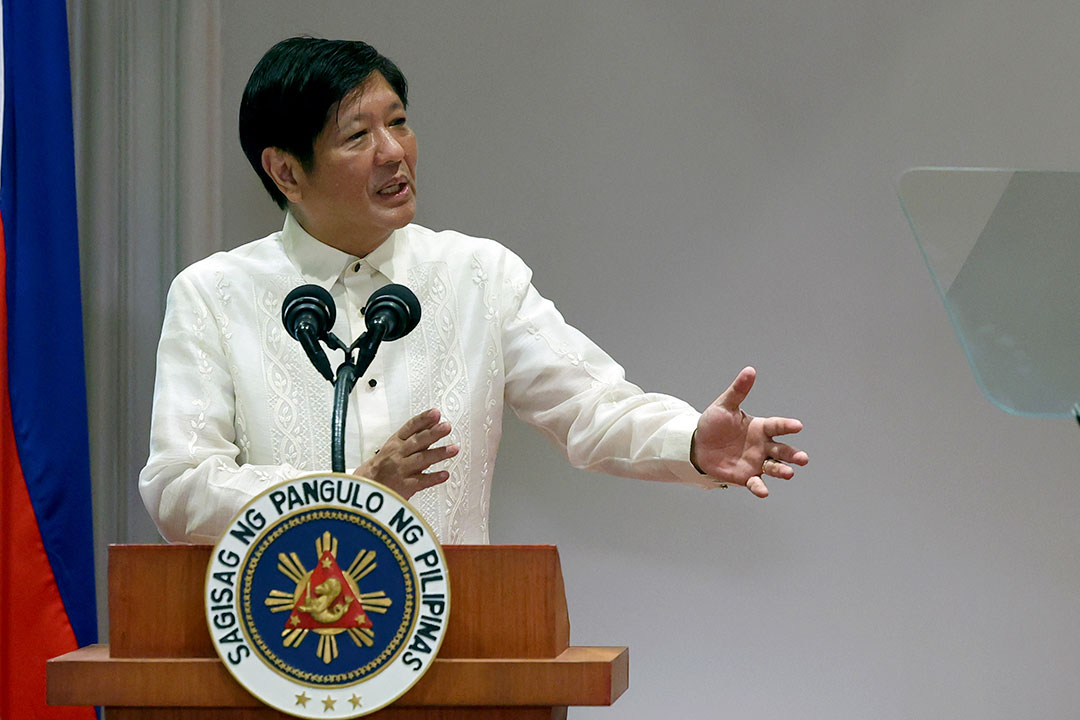
Introspective
By Calixto V. Chikiamco

President Ferdinand “Bongbong” Marcos Jr. may be facing a defining moment in his presidency: the fight against inflation. Whether he succeeds or fails in the fight against inflation will set the tone for the rest of his term, determine his legacy, and build or destroy the political capital he needs to achieve the rest of his objectives.
Inflation is the number one concern among Filipinos, repeated surveys reveal. It is mostly driven by food inflation, a “gut” issue if ever there is one. It determines whether Filipinos go hungry and shapes how they view the world.
On a macro-level, however, persistently high inflation could lead to a “doom loop”: high inflation leads to high interest rates, resulting in lower growth, lower government revenues, and less money for government spending, leading to lower growth.
We are already seeing the effects of high inflation and high interest rates: estimated GDP growth this year is expected to be around 5.5% per annum (pa), lower than the 6-7% pa the government is projecting for the next five years. This will likely lead to lower tax revenues, higher deficits, and bigger borrowings.
So far, the government is falling short in the fight against inflation. The Bangko Sentral ng Pilipinas (BSP) expects inflation to average between 5-6% pa this year, well above its target range of 2-4%. It has indicated that it’s prepared to increase interest rates some more if necessary and this will lead to slower growth.
To fight inflation, the government has chosen to conduct political theater rather than addressing fundamentals. The rice price cap will just result in inedible rice being offered by retailers and a lower buying price for farmers. The public will also see through the “moro-moro” of demonizing so-called hoarders and smugglers as the reason for the high rice prices. The government has failed to put a single “hoarder” to jail.
There is one effective way to fight food inflation, but the administration has chosen not to do it: liberalize food importation, i.e., reduce the tariff on rice and abolish quantitative restrictions on corn, chicken, pork, vegetables, sugar, and fish.
The present system, wherein quantitative restrictions are imposed on these agricultural commodities and high tariffs are imposed whether in-quota and out-quota, just benefits the Department of Agriculture (DA) insiders and the syndicates able to manipulate supply due to these restrictions. Since supply is constricted through these quotas and high tariffs, Filipino consumers pay high prices for food.
At the very least, corn importation should be liberalized, and tariffs reduced to 5%. Corn is the major ingredient in pork and chicken production. It accounts for about 60% of the cost of raising hogs and poultry. The high tariffs and import restrictions on corn are the reason why our chicken prices are almost double that of Thailand. The high cost of corn also incentivizes our hog producers to resort to swill feeding, enabling the African Swine Fever to spread among the hog population and decimating local pork production.
Vietnam recently reduced its tariff on corn from a low 4% to an even lower 2%. Why shouldn’t we have the same low tariffs to reduce chicken and pork prices? Vietnam has smartly decided to move up the agricultural production chain to chicken and pork production where the value added is higher.
The present Philippine tariff on corn is 35%, although this was modified to 5% for in-quota and 15% out-quota temporarily by EO 10, issued by President Rodrigo Duterte and extended for another year by President Marcos, Jr. until the end of this year. The problem is that the MAV (Minimum Access Volume) was set at a low 217,000 MT when the country’s deficit is around 3 million to 5 million metric tons. What the government should do instead is abolish the MAV and allow free importation of corn at whatever volume.
The argument against liberalization has always been that protection helps our farmers. Has it? Decades of protection haven’t benefited our corn farmers, who remain one of the poorest groups in the country, together with fishermen and coconut farmers. Their average farm size is only half a hectare (yes, 5,000 square meters), which is just too small for increasing production commercially. No amount of protection will change this uneconomic production structure.
I’m also mystified as to why President Bongbong Marcos listens to these noisy so-called farmer leaders calling for more protection when they are clearly not the average Filipino farmer, and why he has to resort to political theater in trying to resolve inflation and the food crisis. He isn’t running for re-election unless he’s governing with a different agenda in mind.
He should learn instead from former President Duterte, who listened to his economic managers and pushed through the Rice Tariffication Law despite opposition from these noisy farmer leaders and leftist organizations. The result was stable rice prices for a significant period. The stable rice prices were a contributing factor to the high popularity rating enjoyed by former President Duterte.
There’s a possibility that the situation will get worse before it gets better. Oil prices have surged to $92 per barrel due to the oil production cut announced by Saudi Arabia and Russia. Fertilizer prices and other petroleum-based inputs will surely follow. Sugar prices are surging, and local production is expected to drop with the onset of El Niño or the dry weather phenomenon. That means higher prices for everything from cookies to banana-cue.
If the DA miscalculates on its estimates of the amount of local harvest, and reserves from imports aren’t enough by the end of the year with traders being scared by the rice price cap and threats of prosecution, a full-blown rice crisis can erupt by the first quarter of next year, according to agricultural economist Dr. Fermin Adriano.
Moreover, while wheat and barley are substitutes for corn, the Ukraine war has caused the prices of wheat to gyrate since Russia ended the deal to allow Ukraine to export food. Pork and poultry producers can expect cost increases across the board.
Indeed, a perfect storm is brewing. The times call for tough decisions, not political gimmickry. How President Bongbong Marcos handles inflation and the food crisis will be the defining moment of his presidency.
Calixto V. Chikiamco is a member of the board of IDEA (Institute for Development and Econometric Analysis).